Tribute Ink: Why The Military Love Tattoos
Sergeant Johnson Beharry's tattoo (Picture: Royal British Legion).
Tattoos have a long history in the military, used by serving personnel and veterans to mark their service and identify a sense of belonging.
They can be a permanent reminder of experiences, triumphs and losses, as well as a personal act of remembrance.
"I have always wanted a tattoo to symbolise my time in the Air Force," said Senior Aircraftman Beth Dunning.
Senior Aircraftman Dunning's tattoo of a penguin on her right thigh is a permanent reminder of her tour to the Falklands.
"It was my first time [being away] for such a prolonged time out of the country... Where else can you see penguins in the wild on a beach next to a sheep?"
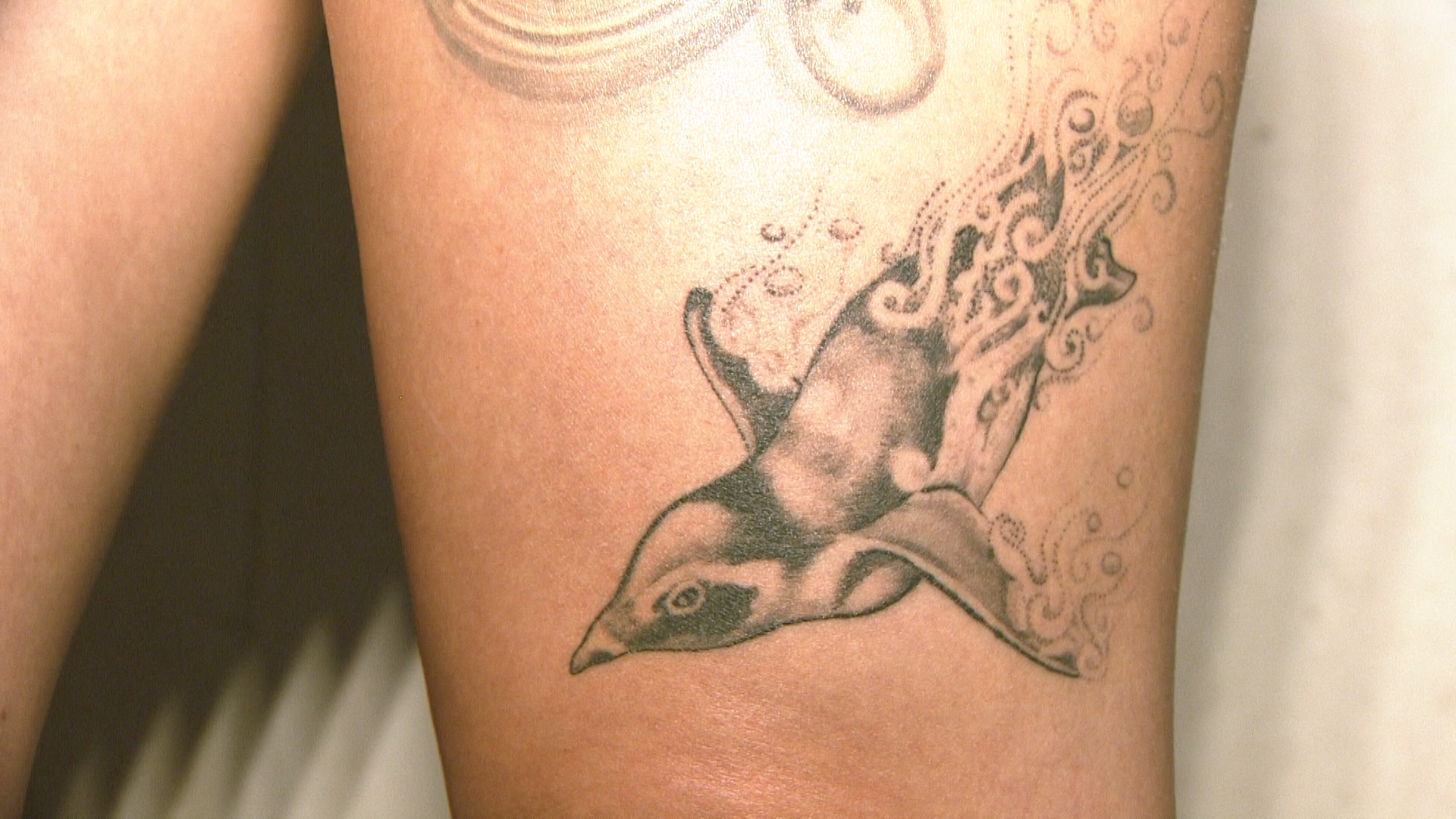
She joined the Air Force in June 2014, inspired by her father. She said her tattoo also symbolises the influence her father had on her choice.
Senior Aircraftman Dunning thinks tattoos in the military are no longer a taboo: "Quite a lot of people - including my own family - thought [the forces] had such a stigma about the tattoos... but it absolutely does not [affect your career].
"You can still have a thriving career and have the tattoos and look that you want."
It is necessary, she said, to show young people they can join up if they have tattoos.
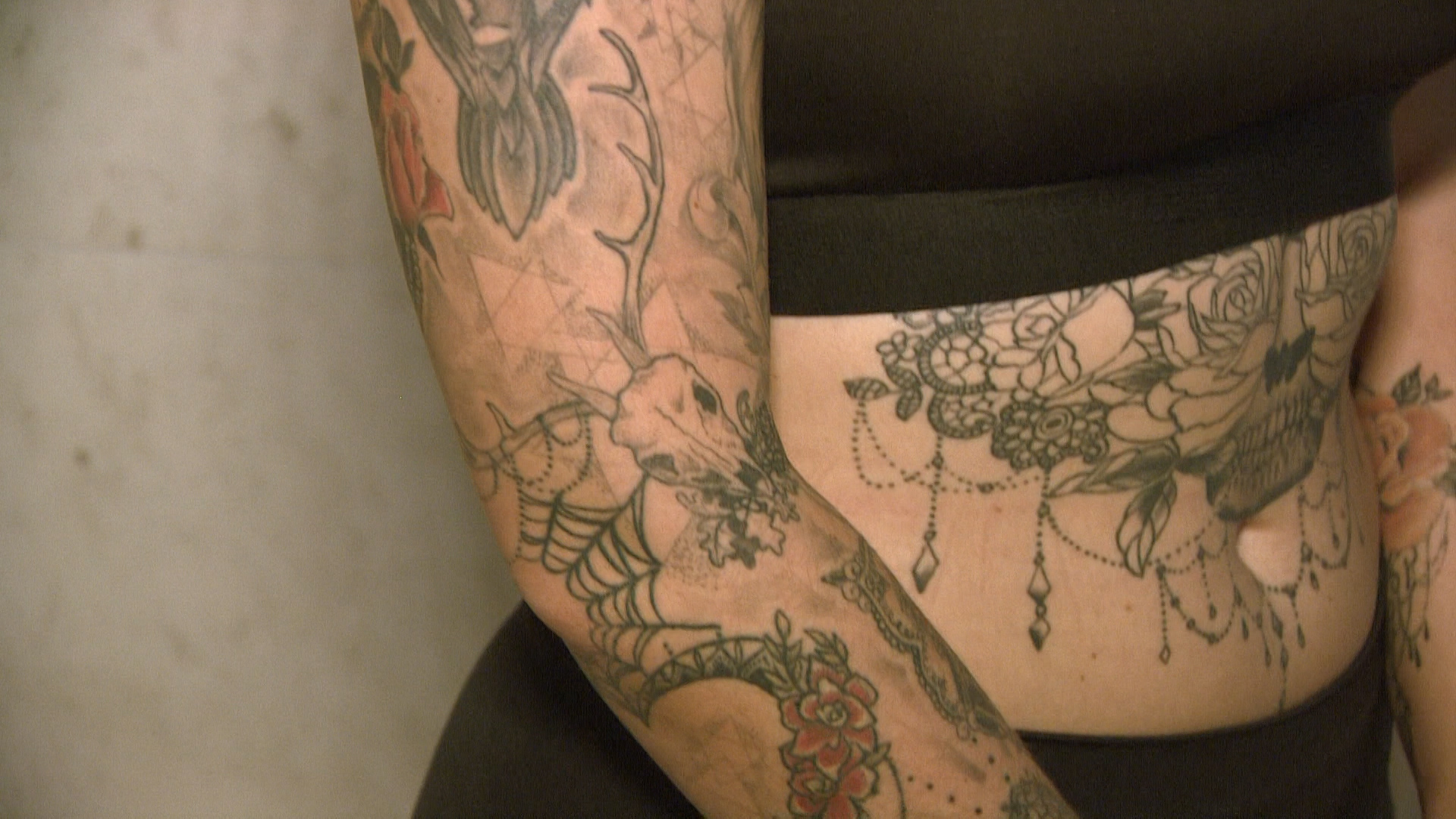
Matt Tomlinson is a former Royal Marine. He has a Royal Marines Bulger playing 'The Last Post' tattooed on his body.
The design holds a high significance for him, as it is dedicated to those who lost their lives under his command.
"I got my tattoo done on my back just before I retired," he said.
"The least I could do was to have their names tattooed on my person, so I could carry their names with me forever."
The tattoo on his back is not the only one he has.
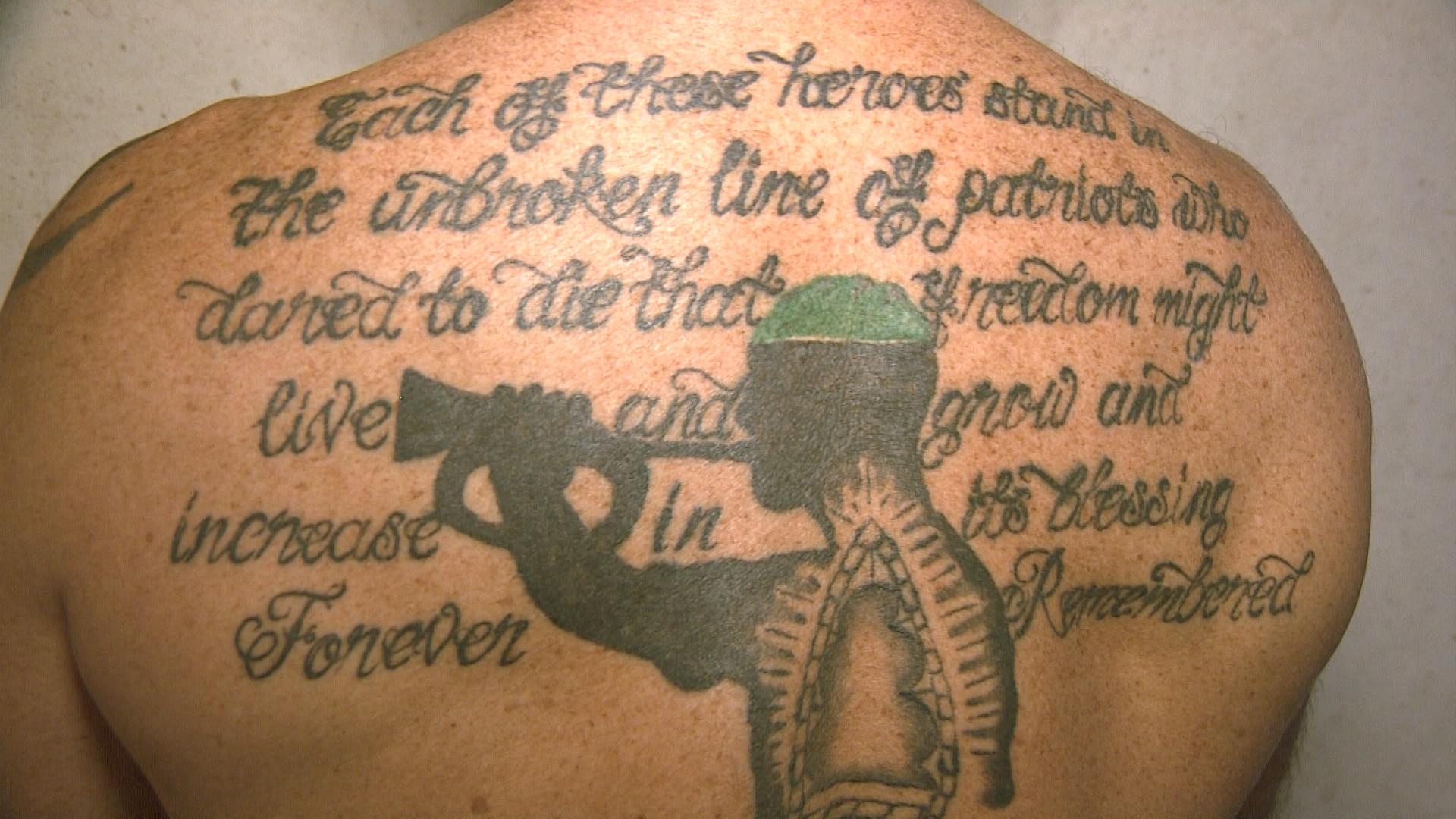
He explained that a tattoo on his chest is more personal. He dedicated it to the people he lost in battle, the people who lost their lives during conflict and even the enemies whose lives he had to take.
Mr Tomlinson said he remembers the days when, if you were in the forces, you were not allowed to be tattooed above your neck or on the hands.
"Over the years, society has better understood that tattoos are works of art," he said.
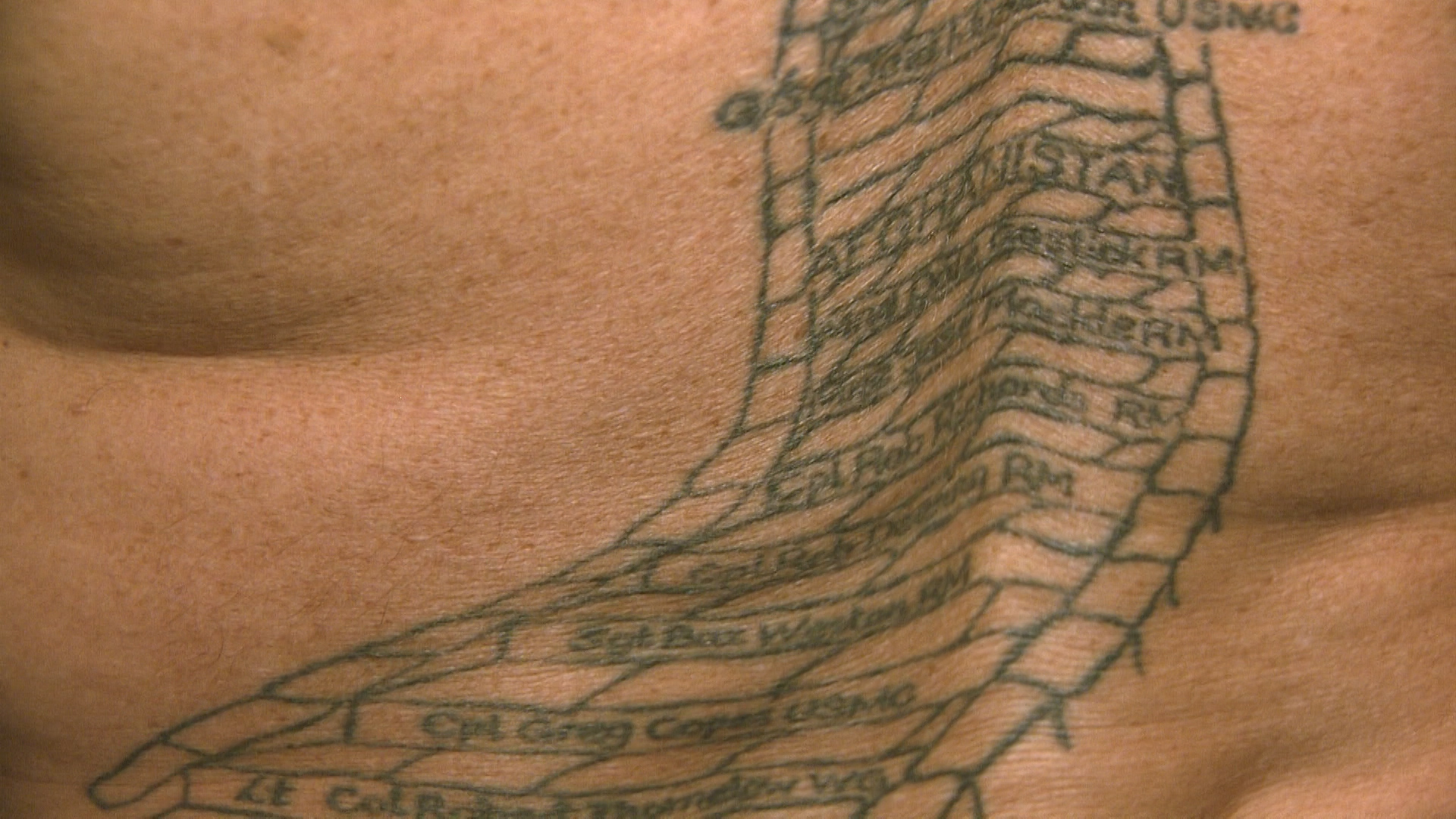
In recognition of the role they have played within the military community, the Royal British Legion in partnership with the National Memorial Arboretum in Staffordshire and the Ministry of Defence has launched an exhibition which brings to life the powerful and poignant stories behind the ink.
For 'Tribute Ink', photographer Charlie Clift worked with all three services to capture how tattooing remains an emotional and meaningful act.
The exhibition features four key themes: 'Rethinking Remembrance', 'Remembering the Fallen', 'A Badge of Belonging' and 'Marking the Memorie's.
Mr Clift was given unprecedented access to military-inspired locations to capture service personnel and veterans. These ranged from RAF Aircraft Hangars to the decks of Royal Navy vessels and British Army Assault courses to barrack blocks.
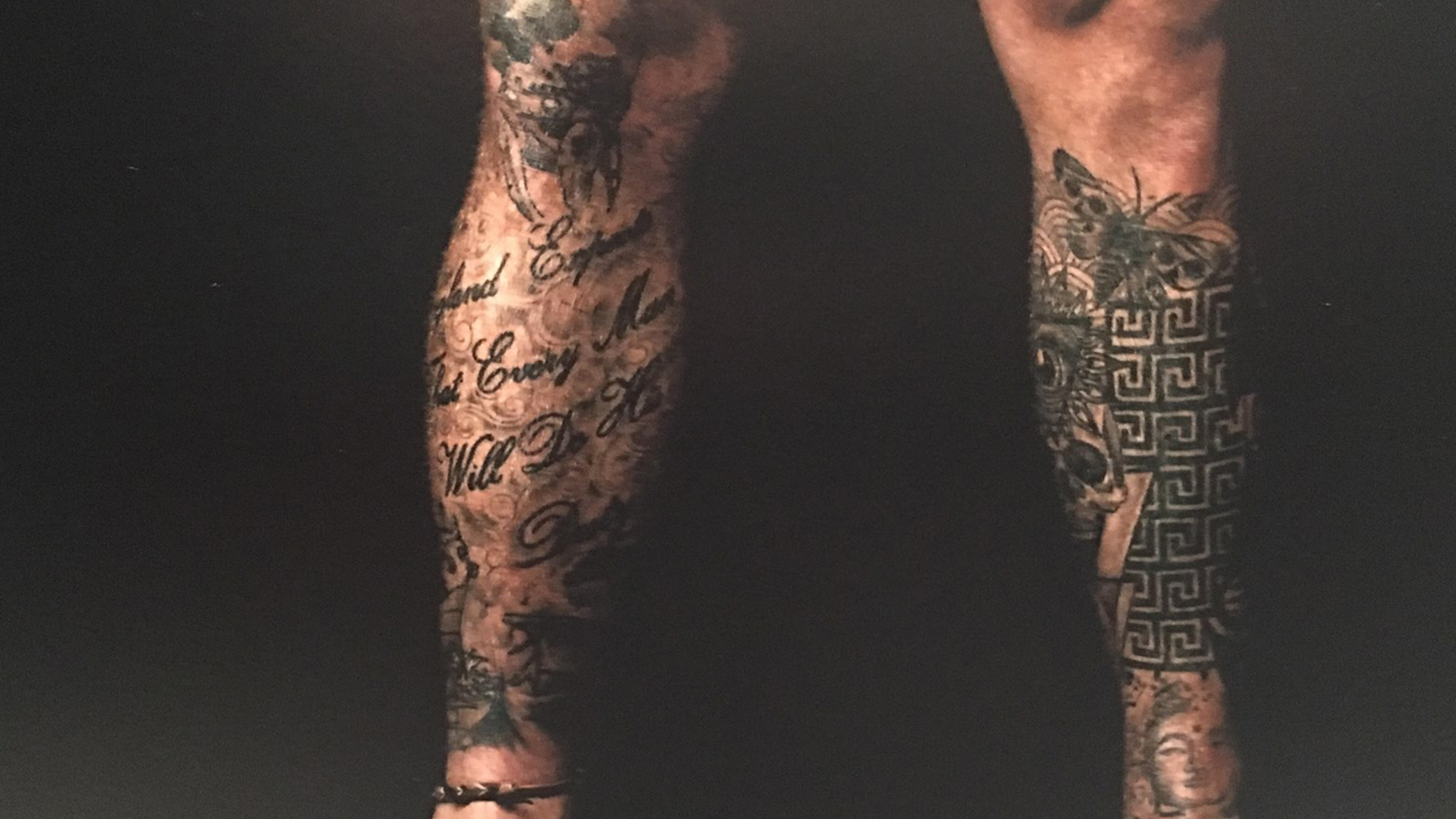
The 'Tribute Ink' exhibition is free of charge and now open at the National Memorial Arboretum.
It will then embark on a UK wide tour including museums, public spaces and military bases in 2020.
Full dates and location are available on the Royal British Legion website.









